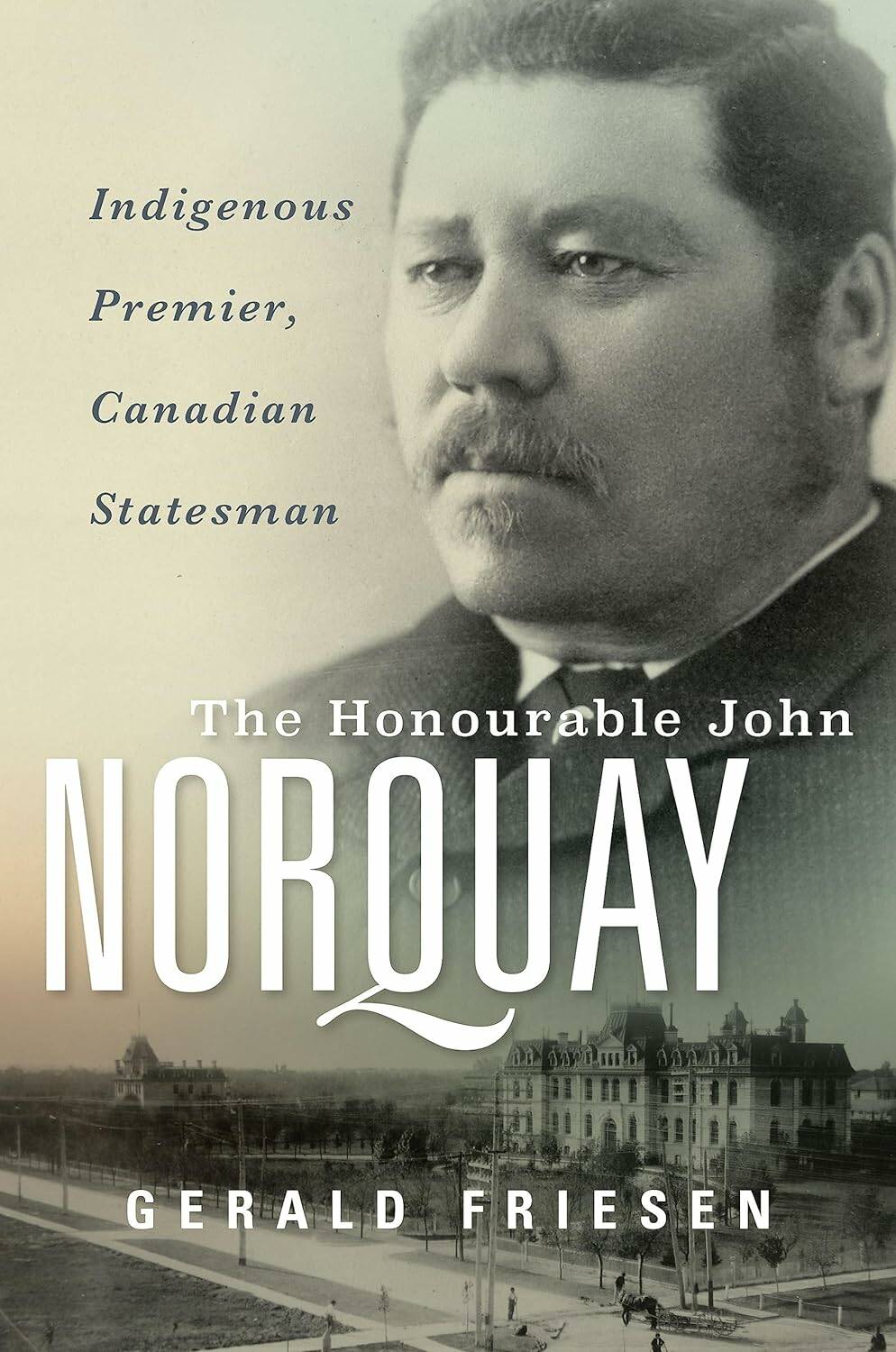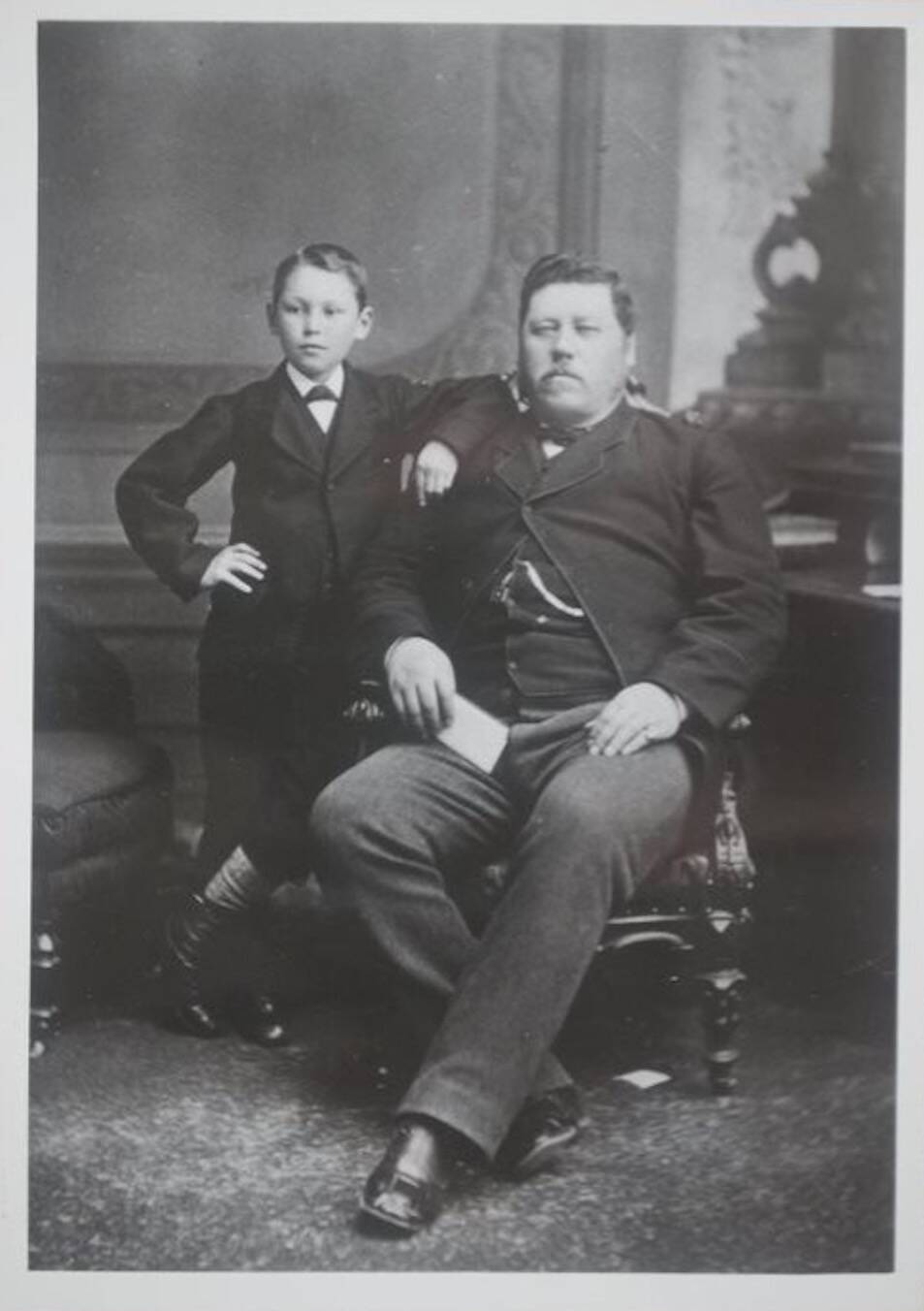A pivotal premier
Historian’s revealing biography of John Norquay a decade in the making
Advertisement
Read this article for free:
or
Already have an account? Log in here »
To continue reading, please subscribe:
Monthly Digital Subscription
$0 for the first 4 weeks*
- Enjoy unlimited reading on winnipegfreepress.com
- Read the E-Edition, our digital replica newspaper
- Access News Break, our award-winning app
- Play interactive puzzles
*No charge for 4 weeks then price increases to the regular rate of $19.00 plus GST every four weeks. Offer available to new and qualified returning subscribers only. Cancel any time.
Monthly Digital Subscription
$4.75/week*
- Enjoy unlimited reading on winnipegfreepress.com
- Read the E-Edition, our digital replica newspaper
- Access News Break, our award-winning app
- Play interactive puzzles
*Billed as $19 plus GST every four weeks. Cancel any time.
To continue reading, please subscribe:
Add Free Press access to your Brandon Sun subscription for only an additional
$1 for the first 4 weeks*
*Your next subscription payment will increase by $1.00 and you will be charged $16.99 plus GST for four weeks. After four weeks, your payment will increase to $23.99 plus GST every four weeks.
Read unlimited articles for free today:
or
Already have an account? Log in here »
Hey there, time traveller!
This article was published 11/05/2024 (539 days ago), so information in it may no longer be current.
Now, at last, all Manitobans realize the pivotal role played by Louis Riel in the creation of our province. But few know that John Norquay was actually our first Indigenous premier, from 1879 to 88.
When he died suddenly at the age of 48, Norquay was known throughout Canada as a prominent statesman and a fighter. He took on Sir John A. Macdonald’s government over the monopoly granted to the Canadian Pacific Railway, and over Manitoba’s lack of equality with other provinces when it came to control over Crown lands and natural resources. (Both cases were ultimately won, though not on his watch.)
Here in Manitoba, among his many accomplishments, he was known for keeping the peace in troubled times, expanding the provincial boundary, overseeing the building of roads and drainage ditches and establishing a civil service and a system of courts and local governments — all during a time of very rapid population growth.

Supplied photo
In this photo taken circa 1886, Norquay (centre) stands among a large proportion of the Manitoba civil service; his friend, provincial auditor Walter Nursey, stands behind his right shoulder.
Why has no one written a biography of Norquay before? Norquay wrote nothing about himself. When he died suddenly in 1889, he left only files from his 19 years in politics — files full of letters from constituents, politicians, friends and family who often wanted his help as well as bills for mortgages, whisky, coal, school fees for his seven children and interest on his many debts.
To put it mildly, it was a formidable task that took Manitoba historian Gerald Friesen 10 years.
As Friesen warns readers at the outset, there are “limits on the life I have been able to recover.” But who better to take on this task than Friesen, who has devoted much of his academic career to unearthing the history of western Canada (The Canadian Prairies: A History).
Born in 1841 to parents of mixed ancestry (Cree, English, Scotch) who farmed a river lot in the parish of St. Andrew’s, Norquay attended a parish school, where he excelled. Orphaned when he was eight, he shifted to his grandmother Spence’s house in the parish of St. John’s. There he was awarded a scholarship and attended St. John’s Collegiate School for four years.
For the next 12 years (1858-1870) Norquay lived a life typical of an educated settler. He taught in parish schools, farmed, married, participated in the bison hunt and, when times were tough, took his family further north to hunt, fish and trade in furs. That’s where he was when Louis Riel and his followers resisted the Canadian takeover in the fall of 1869. When Norquay returned to his farm in High Bluff in March 1870, Riel’s provisional government appointed him magistrate for Portage La Prairie.

The Honourable Jon Norquay
Friesen’s portrait of the Red River settlement just before the influx of settlers from Ontario and Europe is fascinating. Picture a series of farms and parishes lined up along the Red and Assiniboine rivers, many with names that are still familiar. The largest parishes were St. Andrew’s and St. Francois Xavier.
John Norquay spoke Bungee — which is a mixture of Cree, English and Gaelic — as well as English, Michif, French, Cree and some Saulteaux.
In late 1870, when Norquay was elected to Manitoba’s first legislature, the population of our postage-stamp province was approximately 12,000 and the vast majority, like Norquay, were of mixed ancestry: 5,700 French Métis, 4,400 English Métis, 1,200 Europeans, 700 Cree and Anishinaabe.
In Manitoba’s first two elected legislatures of 1870 and 1874, tensions were very high. Fortunately, in both cases the English and French Métis outnumbered the “Canadian party” which included extreme Protestants from Ontario who were determined to prosecute Riel’s supporters. Norquay served in cabinet in both governments. He backed French-language rights and often played the role of mediator.
When premier Robert Davis resigned in 1878, Norquay took his place and went on to win three elections. Due to an attempted coup by his francophone colleague Joseph Royal, Norquay came to rely on the support of the Canadian (Conservative) Party, but he continued to support French-language rights. In 1885 he blamed the federal government for causing the Northwest Rebellion through their neglect of the region.

Marissa Naylor photo
Historian Gerald Friesen spent 10 years researching and writing his biography of Norquay.
His struggle against the Canadian Pacific Railway monopoly eventually resulted in a smear campaign that led to his resignation as premier in 1887. Was Norquay corrupt? From examining the evidence, Friesen concludes that he occasionally “stepped over the ethical line but did not profit from it.”
Most readers of this meticulously researched biography will find the words on the Norquay memorial at Winnipeg’s St. John’s Cathedral moving and close to the truth: “By his sudden death his native land lost an eloquent speaker, an honest statesman and a true friend.”
Faith Johnston wrote a biography of Dorise Nielsen, the third woman elected to Parliament and the first from western Canada.



